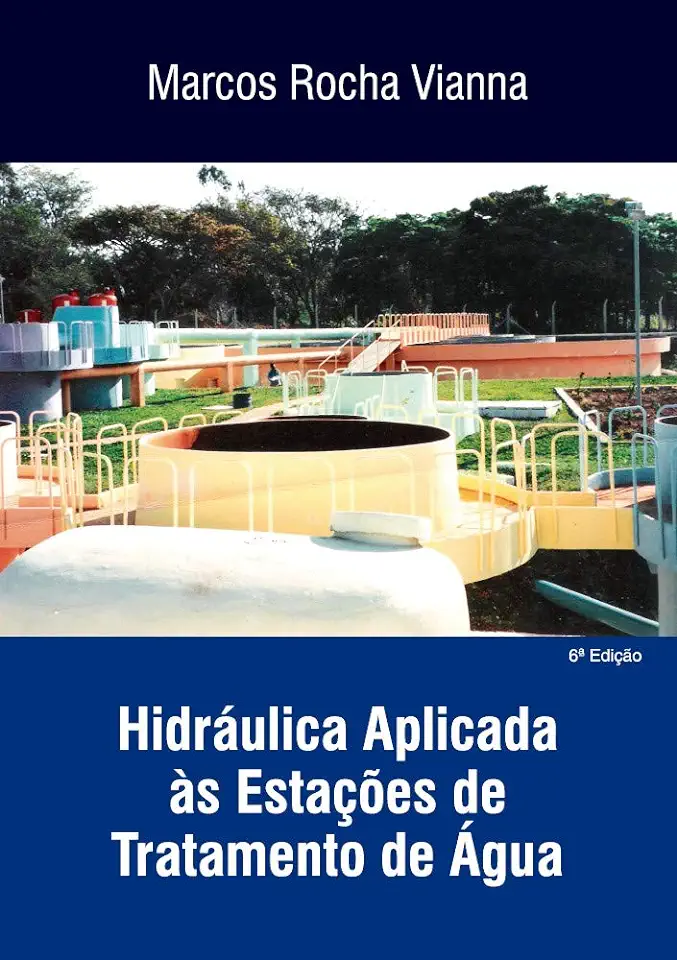
Applied Hydraulics for Water Treatment Plants - Marcos Rocha Vianna
Applied Hydraulics for Water Treatment Plants: A Comprehensive Guide
Introduction
In the field of water treatment, hydraulics plays a crucial role in ensuring the efficient and effective operation of water treatment plants. Applied Hydraulics for Water Treatment Plants, authored by Marcos Rocha Vianna, serves as a comprehensive guide to the application of hydraulic principles in the design, operation, and maintenance of water treatment facilities. This book provides a thorough understanding of the hydraulics involved in various water treatment processes, enabling professionals to optimize plant performance and achieve desired water quality standards.
Key Features:
Comprehensive Coverage: Applied Hydraulics for Water Treatment Plants covers a wide range of topics, including fluid properties, pipe flow, pumps, valves, and hydraulic systems. It offers a holistic approach to understanding the hydraulics of water treatment plants, making it an essential resource for engineers, operators, and researchers.
Practical Applications: The book presents numerous real-world examples and case studies, illustrating the practical application of hydraulic principles in water treatment plants. These examples help readers grasp the concepts and apply them effectively in their own work.
Problem-Solving Approach: Applied Hydraulics for Water Treatment Plants emphasizes problem-solving skills, providing readers with the tools and techniques to analyze and troubleshoot hydraulic issues in water treatment plants. This approach enhances the reader's ability to identify and resolve problems efficiently.
Up-to-Date Information: The book incorporates the latest advancements in hydraulics and water treatment technologies, ensuring that readers have access to the most current knowledge and best practices in the field.
Chapter Overview:
Chapter 1: Introduction to Hydraulics
- Provides an overview of hydraulics and its relevance in water treatment plants.
- Introduces key concepts such as fluid properties, pressure, and flow.
Chapter 2: Fluid Properties
- Delves into the physical properties of fluids, including density, viscosity, and surface tension.
- Explains the impact of fluid properties on hydraulic system performance.
Chapter 3: Pipe Flow
- Covers the principles of pipe flow, including laminar and turbulent flow, head loss, and friction factors.
- Presents methods for calculating pressure drops and sizing pipes.
Chapter 4: Pumps
- Discusses the different types of pumps used in water treatment plants, including centrifugal, positive displacement, and specialty pumps.
- Provides guidelines for pump selection and operation.
Chapter 5: Valves
- Explores the various types of valves used in water treatment plants, including gate, globe, check, and butterfly valves.
- Explains the functions and applications of different valve types.
Chapter 6: Hydraulic Systems
- Integrates the concepts covered in previous chapters to analyze and design hydraulic systems for water treatment plants.
- Includes examples of hydraulic system design for various treatment processes.
Chapter 7: Troubleshooting
- Offers practical guidance for troubleshooting hydraulic problems in water treatment plants.
- Presents common issues and provides step-by-step solutions.
Conclusion:
Applied Hydraulics for Water Treatment Plants is an invaluable resource for professionals involved in the design, operation, and maintenance of water treatment facilities. Its comprehensive coverage, practical examples, and problem-solving approach make it an essential tool for optimizing plant performance and ensuring the delivery of high-quality water. Whether you are an engineer, operator, or researcher, this book will empower you with the knowledge and skills to excel in the field of water treatment hydraulics.